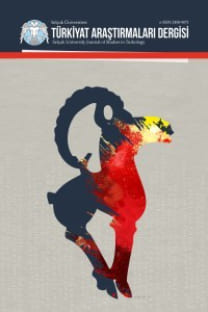HADÂ’İKU’L-HAKÂ’İK FÎ TEKMİLETİ’Ş-ŞAKÂ’İK’TA TELMİH VE TEŞBİH UNSURU OLARAK ŞAHISLAR
Klasik Türk edebiyatını besleyen kaynaklardan biri şahıslardır. Müellifler, bilhassa kişi tasvirlerinde, kişiyi methetmek, eleştirmek ya da kişinin ferdî özelliklerini daha iyi ve daha etkileyici ifade edebilmek gibi çeşitli amaçlarla şahıslara yer vermişlerdir. Mitolojik, efsanevî, kültürel ve dinî şahısların öne çıkan hasletleri, genellikle eser kahramanlarınınkiyle kıyaslanmış; hatta çoğu zaman, memduhun daha üstün olduğuna vurgu yapılmıştır. Telmih ve teşbih unsuru olarak zikredilen bu şahıslar, zamanla edebiyatın içerisinde motifleşmiş; her bir şahıs, sahip oldukları vasfın timsali olmuştur. Türk edebiyatında manzum ve mensur çok sayıda eser kaleme alan Atâyî, Hadâ’iku’l-Hakâ’ik fî Tekmileti’ş-Şakâ’ik isimli biyografik eserindeki kişi tasvirlerinde, sahip oldukları özellikler ile dünyaya nam salan Türk, Arap ve Fars başta olmak üzere farklı uyruktaki kişileri çeşitli bağlamlarda zikretmiştir. Atâyî’nin, tarihî, mitolojik, dinî, efsanevî ve edebî kimlikleriyle öne çıkan şahısları hangi bağlamda kullandığını ortaya koymayı hedeflediğimiz bu çalışmada öncelikle, Atâyî’nin telmih ve teşbih unsuru olarak kullandığı 99 isim tespit edilmiştir. Bu isimler, “Peygamberler”, “Dinî-Tasavvufî Şahsiyetler”, “Tarihî Şahsiyetler”, “Mitolojik ve Efsanevî Şahsiyetler”, “Masal ve Hikâye Kahramanları”, “Diğer Şahıslar” ve “Hakkında Bilgi Bulunamayanlar” olmak üzere 7 ana başlık hâlinde tasnif edilerek incelenmiştir. Çalışmada ayrıca, telmih ve teşbih unsuru olarak yer verilen şahısların öne çıkan hususiyetlerinin, Hadâ’iku’l-Hakâ’ik fî Tekmileti’ş-Şakâ’ik’a kattığı mana zenginliği de belirlenmeye çalışılmıştır.
PERSONS AS AN ELEMENT OF ALLUSION AND SIMILITUDE IN HADÂ’İKU’L-HAKÂ’İK FÎ TEKMİLETİ’Ş-ŞAKÂ’İK
One of the sources that feed the classical Turkish literature is persons. Authors have included persons in their descriptions of people for various purposes such as praising, criticizing, or expressing the person's characteristics better and more impressively. Prominent traits and characteristics of mythological, legendary, cultural, and religious persons are often compared to that of the protagonists, and it is often emphasized that memduh is superior. These persons, who are mentioned as elements of allusion and similitude, became a motif in the literature over time, and each person became the epitome of their qualifications. In the descriptions of the persons in his biographical work named Hadâ'iku'l-Hakâ'ik fî Tekmileti’ş-Şakâ’ik, Atâyî, who wrote many works in verse and prose in Turkish literature, mentioned people of different nationalities, predominantly Turkish, Arab, and Persian, who are famous in the world with their characteristics, in various contexts. In this study, in which we aim to reveal the context in which Atâyî uses the persons who stand out with their historical, mythological, religious, legendary, and literary identities, firstly 99 names that Atâyî used as references and similes were determined. These names have been examined by classifying them under 7 main headings, including "Prophets", "Religious-Sufi Personalities", "Historical Personalities", "Mythological and Legendary Personalities", "Tale and Story Heroes", "Other Persons" and "Those who could not find information about". In the study, it was also tried to determine the richness of meaning added to Hadâ'iku'l-Hakâ'ik fî Tekmileti’ş-Şakâ’ik by the prominent features of the persons included as the elements of allusion and similitude.
